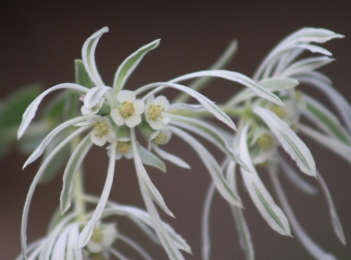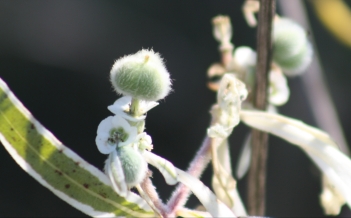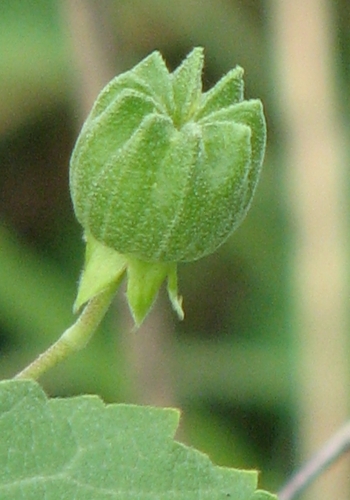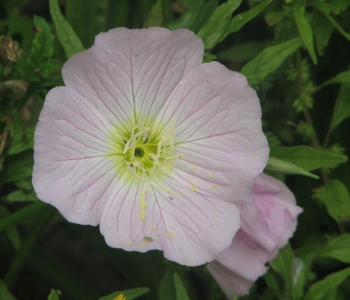Magnolia; Southern Magnolia Magnolia grandiflora L;. Dallis is considerably west of the natural range of Magnolia, and too dry for it to go native, but it is commonly planted as an ornamental tree, where it thrives if watered. The large, thick, stiff, evergreen leaves are dark, glossy green above, rust-brown to purple on the underside, beginning as ‘pig-tails’ that unfurls as they open. If grown in full sun it attains a conical shape, the lower branches spreading out radially from the smooth, dark grey trunk, and drooping slightly. Large, white, cone shaped buds open up into huge (5-8”), fragrant (lemony smell), brilliant white flowers, the cupped petals arranged radially around a central, fleshy cone, from which white anthers protrude. The petals fade to cream, then brown two days before falling off. The fleshy cone turns reddish, then brown as bright orange-red seeds mature and poke out of the cone bracts. Beetles pollinate this flower. The flowering season can last into Fall if the summer is cool and the Fall mild. (280-281) 4/29/15; 4/26/16-; 5/2/18; 5/6/19; 5/1/20;

Southern Magnolia habit; a slow growing conical, evergreen tree of eastern forests with large, crisp, dark green leaves, bearing huge, pure white, fragrant flowers
Note; the long, wide, glossy green leaves, which are maroon on the underside, unfurl from ‘pig-tails’ in an alternating spiral

Note; the trunks are smooth, with slightly scaly bark that does not form corky ridges or warts

Note; the large white flowers are composed of 13-15 cupped petals surrounding a fleshy column stippled with white pistols
Note; flowers have an intense lemony fragrance, but last only 3 days or so

Note; petals drop off, leaving a green column with red seeds embedded in the deep bracts




























